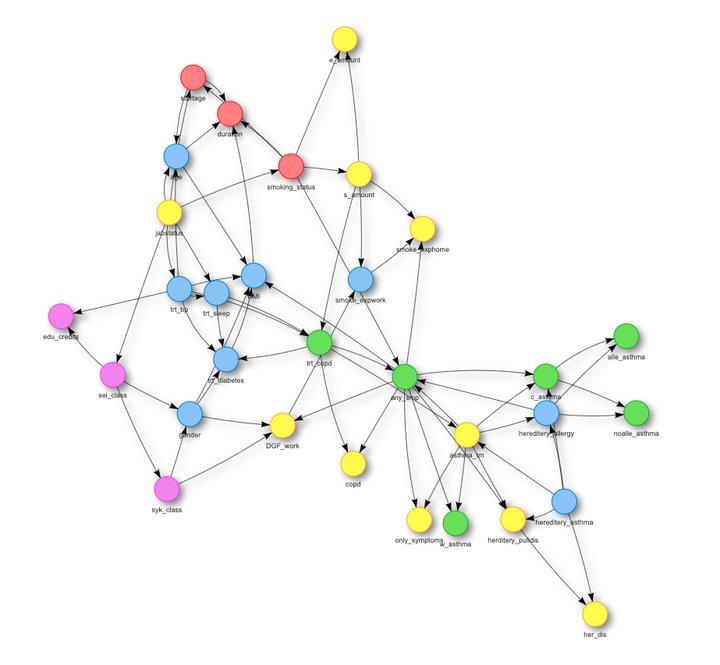Probabilistic Graphical Models for Inference

Due to the typical highly heterogeneous clinical and epidemiological data generating processes, multiple correlations/dependencies between variables and between response variables arise. Conventional regression models have a limited capacity in capturing such dependent multi-factorial relationships. In this project, we plan to leverage the powerful approach of probabilistic graphical models (PGMs) such as BNs and Hidden Markov Models for conducting statistical inference. PGMs Models learn joint multivariate distributions over large numbers of random variables that interact with each other. So far, we have used BN. Bayesian network is a PGM that models the associations between all covariates with all variables being potentially dependent. Bayes rule is usually employed, which allows the factorization of the joint probability distribution of the involved variables, leading to a probabilistic graph directed acyclic graph (DAG). The overarching goal of these models is to estimate the conditional dependence of different variables, interactions, and therefore under specific assumptions may reveal potential causal links between variables. This flexibility gives BNs an advantage over other approaches for estimating the risk of disease with clinical relevance and allows core decision pathways.